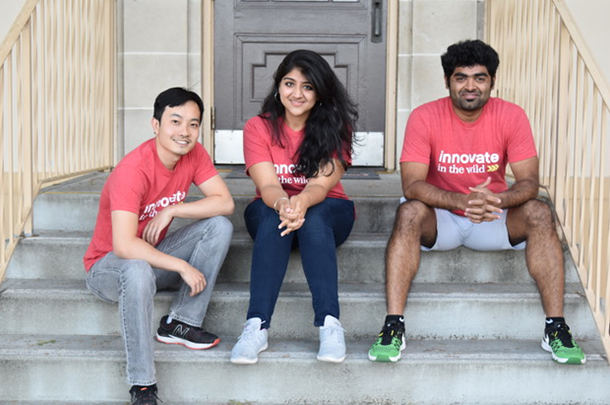CMU students help build BitClave’s blockchain network
For their practicum project, a group of CMU students worked side-by-side with BitClave to bring the start-up’s blockchain platform to life.
This past fall, a team of students from Carnegie Mellon Silicon Valley’s Information Networking Institute (INI) worked hand-in-hand with a start-up company developing what many are calling the most disruptive technological innovation since the advent of the internet: blockchain.
“The tasks we gave the team were very much where we’re trying to go with the next version of the product,” says Patrick Tague, Chief Technology Officer at the California-based BitClave and INI’s associate director.
BitClave is using blockchain technology to disrupt the advertising technology market. At its core, blockchain is a decentralized digital ledger that securely tracks changes in ownership of goods and services. The ledger is maintained by every member of the blockchain’s peer-to-peer network, so it eliminates the need for third-party “middle-man” involvement.
The tasks we gave the team were very much where we’re trying to go with the next version of the product.
Patrick Tague, CTO, BitClave
The company has created a decentralized search engine that connects potential consumers directly to businesses. Instead of ads being controlled and disseminated by advertising or marketing firms, they’re delivered directly from a business to interested customers across BitClave’s anonymous, secure search network—the BitClave Active Search Ecosystem, or BASE.
It was aspects of BASE’s anonymity that the INI team, comprised of second-year bicoastal mobility and information security graduate students, worked on for BitClave.

Source: Information Networking Institute
INI’s BitClave team members consisted of Wei Min Teo, Simran Gujral, and Saurabh Sharma.
If a woman named Rachel wants to search for hiking boots without being flooded with hiking boot ads for weeks after, she needs to conduct her search anonymously. BASE gives her that ability. Unless Rachel opts to make her search visible, businesses will never know the products she’s searching for. But if, two weeks later, she wants to buy hiking boots, there has to be some way to let businesses know that the anonymous search from two weeks ago was actually her. This way, those businesses she was searching for can send her targeted deals on hiking boots.
At BitClave, they refer to this as “selective linkability.” The INI team was tasked with discovering a technological solution that fosters this capability.
Tague, who is also an Electrical and Computer Engineering professor at Carnegie Mellon’s Silicon Valley campus (CMU-SV), shares that the entire process was extremely collaborative. The INI team met with BitClave every week, providing updates, reviewing what they’d discovered, and strategizing for the upcoming week.
“It was really valuable for us. What they did is going to, in some way, be incorporated with what we’re building,” Tague says. “The whole time, they were considering the efficiency requirements, the scalability requirements, and also trying to give the security and privacy properties we wanted.”
No small feat considering the starting point was a bunch of stuff that didn’t work, Tague says. That’s what BitClave gave the team before pointing them in the direction of some existing technologies they thought might be helpful for what they were trying to do. Really though, they weren’t sure.
Tague shares a sentiment that he says is common with most start-ups: BitClave wasn’t completely sure what it wanted or what it needed. However, the INI team was able to provide excellent insight and definite direction to the initial design of BitClave’s product.
“They did some good analysis and came up with some good use cases to really highlight one particular existing technology that we might be able to tweak to make do exactly what we need it to do,” says Tague.
Ultimately, this is the goal of INI’s practicum projects. Tague says the projects aren’t some canned, fabricated thing. They’re projects that companies care about.
“They’re real world,” he says, “potentially have real implications, could turn into part of a company’s product or drive a company in some different direction.
